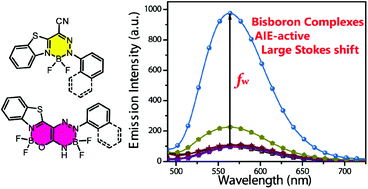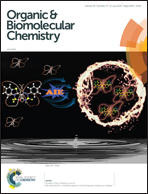AIE-active boron complexes based on benzothiazole–hydrazone chelates†
Abstract
A new family of aggregation-induced emission (AIE)-active monoboron and bisboron complexes based on benzothiazole–hydrazone chelates was synthesized. These complexes showed very weak fluorescence in fluid solution due to active intramolecular rotation and were emissive in high-viscosity solvents or in the aggregation state. Single crystal X-ray diffraction analyses and theoretical calculations were carried out to explain AIE behavior. The large Stokes shifts (3590–7400 cm−1) and relatively highly efficient solid-state emission make these complexes valuable AIE luminophores for further potential applications.



 Please wait while we load your content...
Please wait while we load your content...